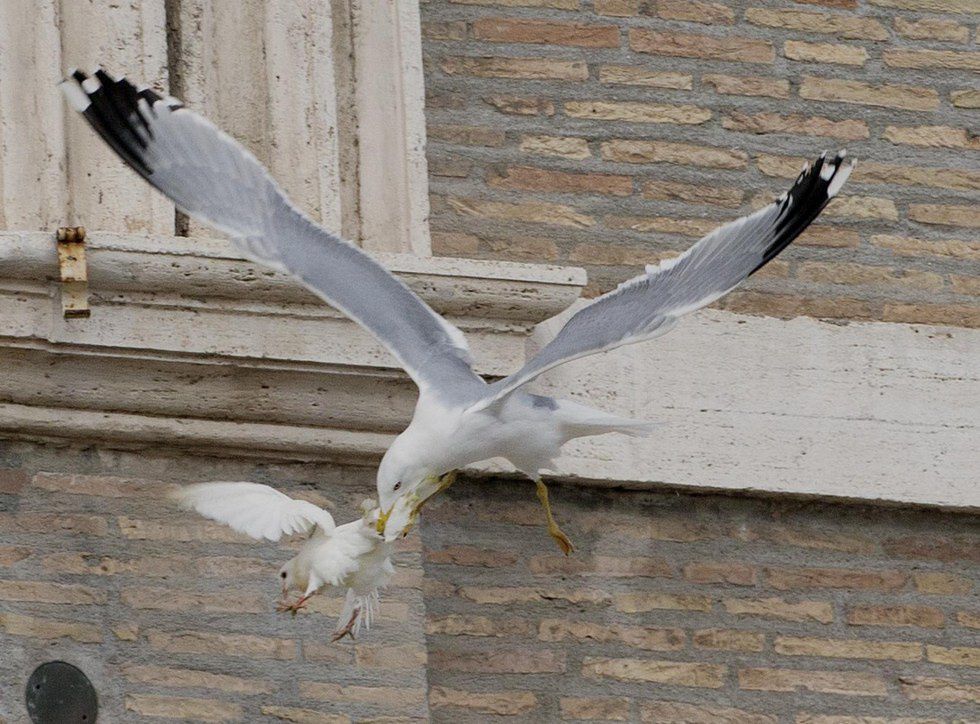White dove releases have been used for thousands of years in a variety of occasions. When released at weddings, the doves are meant to be a symbol of blessings and peace for the newlywed couple. At funerals, the release of the doves is meant to symbolize the freeing of the spirit.
Well, that sounds like a lovely way to commemorate such meaningful events in our lives, right? Releasing birds as a part of a ceremony may be a visually appealing, Disney-esque moment, but such practices can be detrimental to a bird's health. Animal lovers should think twice before having a dove release be a part of events such as funerals or weddings and should consider the danger that it puts the birds in.
To start off, let's take a look at the white dove as a breed.
Unlike mourning doves and rock doves (pigeons) that you can find easily by taking a look outside, white ringneck doves are actually domesticated animals. In America, you will not encounter white doves in the wild, and if you do happen to see one outside, it is more than likely somebody's escaped pet or a survivor of a dove release. Because white doves are not wild animals, they do not possess the skills necessary in order to survive outside. They have no migratory instincts whatsoever, and therefore could die due to exposure, are unable to protect themselves against predators, and are unable to gather food for themselves. When you release a white dove, or any domesticated animal for that matter, into the open, you are endangering their lives by exposing them to conditions they do not possess the skills to survive in.
The use of actual doves, however, is a lot less frequent when it comes to "professional" dove releases. While a DIY dove release may be performed with white ringneck doves, the birds that are typically used by companies for hire in this practice are actually white homing pigeons. This breed of pigeon is known for its ability to find its way home across long distances. Despite this, however, homing pigeons are still a domesticated breed of bird and still face danger when released into the wild. Homing pigeons will still face exposure to the elements and are not used to extreme temperatures. They are also easy prey for larger birds and other animals. Remember what happened when the Pope performed a dove release?
Even with its homing instinct, this breed of pigeon is not exempt from exposure to the elements or predation. Attacks similar to the one depicted in the image above are common when pet birds are released. Shelters that take in pigeons, doves and other birds often home ringneck doves or homing pigeons that sustain injuries as a result of being used in a ceremonial dove release.
Dove releases are animal cruelty. Releasing a bird that has no tools to use in the wild is essentially the equivalent of dropping your pet dog off in the middle of nowhere and then driving away, leaving a helpless animal to fend for itself. There is no sense in releasing animals into environments where they cannot possibly survive. It is simply inhumane and cruel to let animals who have become dependent on humans into the wild to fend for themselves.
Speak out against ceremonial dove releases, and if you would like to help a bird in need, look and see if your local animal shelter is currently housing any feathered friends. Many shelters that house birds will often have pigeons and doves that are survivors of dove releases.






















